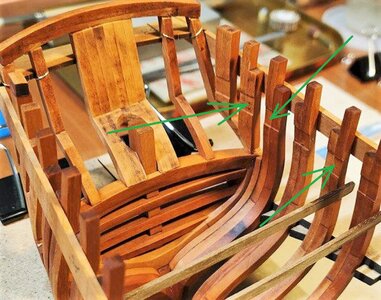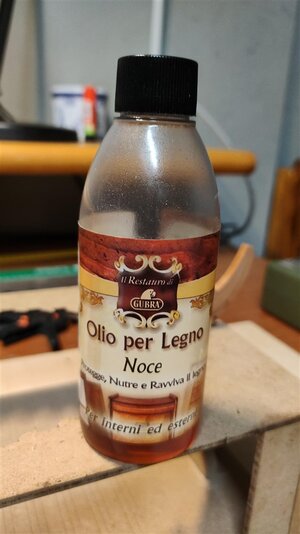Wednesday,August 2nd, 2023
I'm working to assemble the transom and some stern frames.
The starting points; first of all some tests to verify that everything is ok . .
01 La Belle Photos/IMG20230606190110.jpg

01 La Belle Photos/IMG20230606190132.jpg

01 La Belle Photos/IMG20230606190141.jpg

Once the check has been passed, I proceed to glue the various elements, after having definitively finished them . .
01 La Belle Photos/IMG20230625172454.jpg

Adding new items to the transom . .
01 La Belle Photos/IMG20230629114147.jpg

01 La Belle Photos/IMG20230629114200.jpg

The transom practically finished, here for photographic reasons the model has been removed from the mounting slip . .
01 La Belle Photos/IMG20230629182120.jpg

01 La Belle Photos/IMG20230629182135.jpg

Finally the addition of the last elements and everything is finished. I thought it was a complicated job but everything went quite well.
P.S. I applied some wood oil which amplified the color of the pear wood, anyway the main reason was to nourish the wood and avoiding it became too dry.
01 La Belle Photos/IMG20230702105653.jpg

See you soon,
Jack Aubrey
I'm working to assemble the transom and some stern frames.
The starting points; first of all some tests to verify that everything is ok . .
01 La Belle Photos/IMG20230606190110.jpg
01 La Belle Photos/IMG20230606190132.jpg
01 La Belle Photos/IMG20230606190141.jpg
Once the check has been passed, I proceed to glue the various elements, after having definitively finished them . .
01 La Belle Photos/IMG20230625172454.jpg
Adding new items to the transom . .
01 La Belle Photos/IMG20230629114147.jpg
01 La Belle Photos/IMG20230629114200.jpg
The transom practically finished, here for photographic reasons the model has been removed from the mounting slip . .
01 La Belle Photos/IMG20230629182120.jpg
01 La Belle Photos/IMG20230629182135.jpg
Finally the addition of the last elements and everything is finished. I thought it was a complicated job but everything went quite well.
P.S. I applied some wood oil which amplified the color of the pear wood, anyway the main reason was to nourish the wood and avoiding it became too dry.
01 La Belle Photos/IMG20230702105653.jpg
See you soon,
Jack Aubrey





